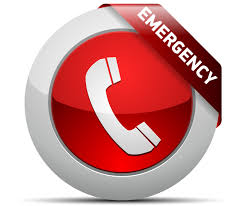
Of all your phone’s smart features, two of the most underused are the emergency contact and medical ID tools. All phones have them, and if you’ve set yours up correctly, emergency responders can alert your loved ones and immediately see your allergies in the scary event that you’ve suffered an accident and can’t share that information yourself.
It’s easy to put off this setting, especially if you’re feeling invincible. But these settings exist for a reason, and taking 10 minutes to enter your emergency contact and medical information into your phone could actually help save your life and get your loved ones to your side faster.
We’ll walk you through the setup process on your iPhone or Android phone.
Set up your Medical ID on iPhone
The iPhone has a Medical ID feature that first responders can access and use to help treat you. Your ID can include any medical conditions you may have, medication allergies and emergency contacts.
Here are the steps to set up your Medical ID on an iPhone:
1. Opening the Health app and your iPhone and tap on your profile photo in the top-right corner.
2. Select Medical ID under the Medical Details section, followed by Edit.
3. Fill out any information you want emergency responders to know.
4. Make sure Show when locked is turned on.
5. Once you’ve filled out all of your information, as well as who should be contacted, tap Done.
To view your Medical ID and see what it looks like, as well as practice how to access someone else’s Medical ID, try to unlock your iPhone by swiping up on your screen. If you use Face ID, I recommend covering the True Depth camera at the top of your screen to prevent it from recognizing you and unlocking your phone.
Once you’re prompted to enter your passcode, tap on Emergency at the bottom of your screen followed by Medical ID.
Set up emergency details on an Android phone
On Android, the process will vary depending on the brand of phone you’re using. In general, you should be able to open the Settings app and search for Emergency information using the search bar at the top of the screen. One of the results should take you to the appropriate section of settings.
Samsung users can use open the Phone app, select the Contacts tab, followed by selecting My Profile and scrolling to the bottom of the page.
Once you find the emergency information section, enter the information you want to share, including your medical information and emergency contacts.
To view what others will see on your phone, or practice getting to the medical info on someone else’s phone, try to unlock your phone by pressing the power button or tapping on the screen. When prompted to enter your passcode, tap on Emergency, Emergency call or a variation of that phrasing at the bottom of your screen. The next screen will have another button to show Medical Info.
Google Pixel 4 users have another option: Use the built-in Personal Safety app. Once you set up the Safety app, it will be able to detect car crashes and call for help, in addition to providing contact information for first responders. Take a few minutes to set up the app, add your emergency contacts, info, and grant it the necessary permissions to help keep you safe in an emergency.
Cipriani, Jason. “Emergency contacts on your phone: Set it up right now” CNET February 2020
